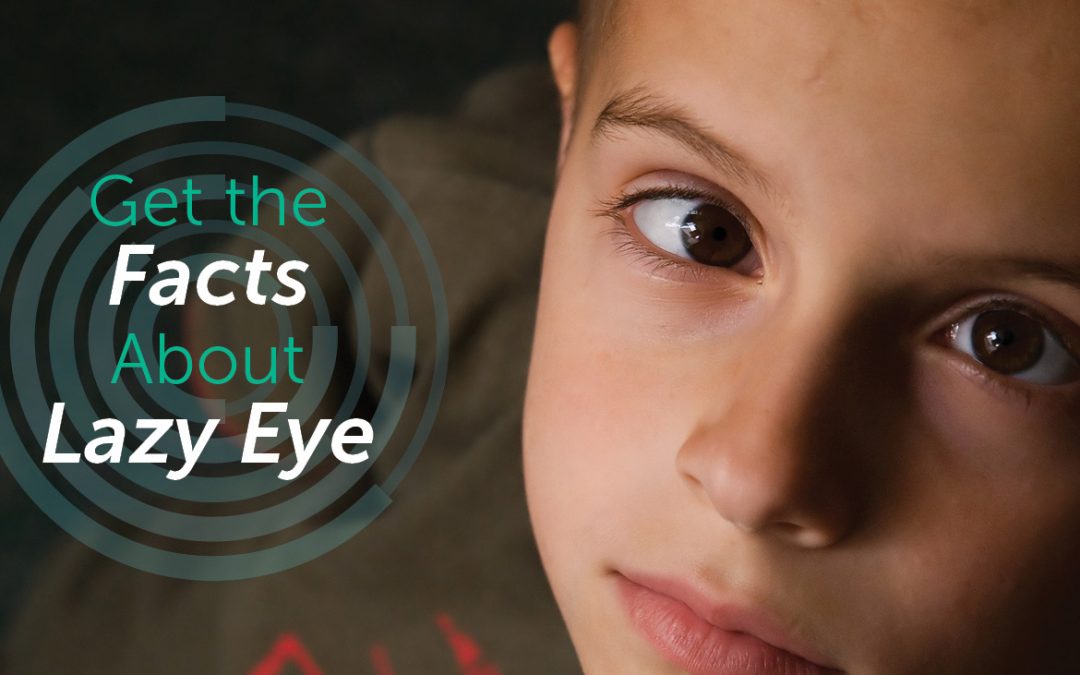Lazy eye, or amblyopia, occurs when one eye fails to reach normal visual acuity, even with prescription lenses. In most cases, this begins in infancy and early childhood. If left untreated, lazy eye can result in blindness, loss of vision, or the abnormal development of a child’s eyes.
What causes lazy eye?
Lazy eye occurs when one eye experiences fewer visual signals from the brain in comparison to the other eye. In prolonged cases, the eyes may stop working together and eventually the brain may completely ignore the input coming from the “lazy” eye.
Strabismus
Strabismus, the most common cause of lazy eye, is when an individual has a crossed or turned eye. Due to poor alignment, the brain begins to ignore the input from the poorly aligned eye resulting in strabismic amblyopia.
Refractive
Refractive amblyopia is caused by unequal refractive errors in the eyes. For example, if one eye has an uncorrected nearsighted RX and the other does not, an individual will experience blurred vision in only one eye. In this example, the brain will eventually neglect the blurred vision and causes amblyopia from lack of use.
Deprivation
Deprivation amblyopia is caused by articles on the eye, such as a cataract, preventing light from entering the eye.
Signs and symptoms to look for:
Because lazy eye begins at such a young age, it is difficult to pinpoint exact symptoms. However, as a parent, there are signs you should look for to determine if your child may have a visual disability. These include:
- Crossed eyes or misalignment
- If a child cries or fusses when you cover one eye
- Trouble reading
- An eye which wanders inward or outward
- Poor depth perception
- Squinting or shutting an eye
Importance of early detection
Lazy eye will not subside on its own and can worsen over time. If left completely untreated, lazy eye could lead to permanent visual problems. It is important to have your child’s eyes examined at an early age to catch any signs of lazy eye and seek treatment if needed.
Children should have their first eye exam at 6 months old, another at 3 years old, and again before starting school. Regular comprehensive eye exams help ensure your child’s eyes are developing normally and allow for early detection and treatment of eye-related conditions.
Myth or Fact
Bangs cause lazy eye. MYTH. Lazy eye cannot be caused by bangs or other cosmetic modifications unless it causes the eye’s line of sight to be blocked all day and night.
Patching is a common way to treat lazy eye. FACT.
Older children and adults with lazy eye cannot receive treatment. MYTH. An individual can receive treatment for lazy eye at any time. The effectiveness of treatment depends on a variety of factors including development stage and early detection.
The eye becomes “lazy” because the brain has decided not to process visual information from the eye. FACT.
Treatment is most effective if lazy eye is detected before age 7. FACT.

